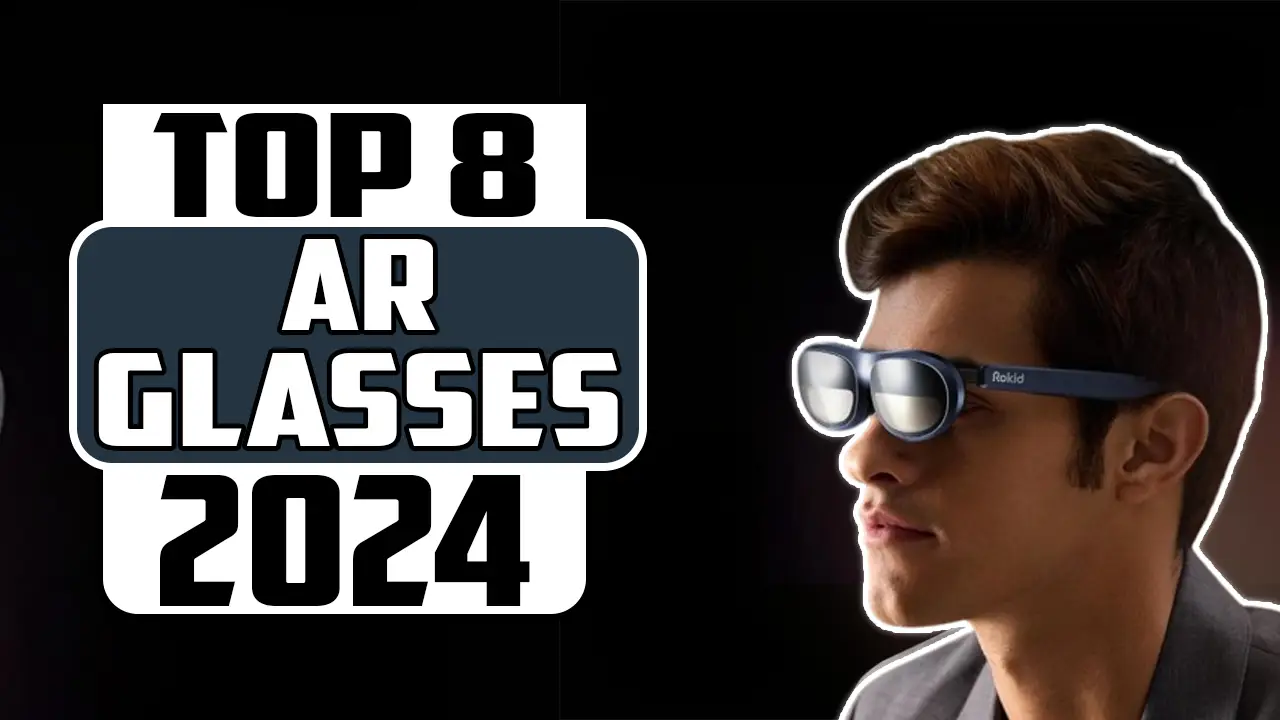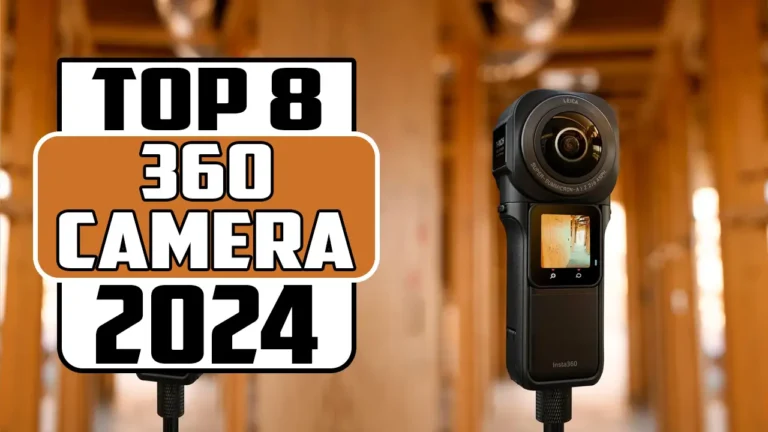Top 8 Best AR Smart Glasses In 2024

Augmented Reality (AR) glasses have made significant advancements in recent years, offering a variety of features and designs that cater to different user needs. From immersive gaming experiences to social media integration and productivity tools, AR glasses are becoming an increasingly popular choice for tech enthusiasts. This list highlights the top eight AR glasses available, detailing their unique features and benefits to help you choose the right pair for your needs.
8. Ray Neo X2 Lite AR Glasses
The Ray Neo X2 Lite AR glasses are an innovative addition to RayNeo’s line, featuring a fully self-contained mobile platform built on Android 12. This means you can use them independently, without needing to connect to a phone or other device. Initially available in China, the X2 will be launched in the United States through a crowdfunding campaign early this year. The X2 Lite, an upgraded version, is expected to hit the market later this year. It’s significantly lighter, weighing about 60 grams compared to the X2’s 100 grams, thanks to the newer Qualcomm AR1 chipset which replaces the previous XR2 chipset. Despite the weight reduction, it retains all the features of its predecessor.
7. TCL AR Glasses
The TCL NXTWEAR S smart glasses are notable for their comfort and sleek design, which includes TÜV Low Blue Light eye protection. These features make them ideal for extended movie watching or gaming sessions. TCL has focused on user convenience, integrating a magnetic attachment system for the sunglass shade that easily snaps on and off. Additionally, the physical buttons for adjusting volume and brightness or switching to 3D movie mode are a practical touch, making these glasses user-friendly. They also feature a Pogo USB connector, similar to Apple’s MagSafe, which easily disconnects to reduce wire strain and enhance portability.
6. Lucyd Nautica Collection AR Glasses
Lucyd’s Nautica Smart Eyewear stands out with built-in microphones and speakers that allow users to listen to music, take calls, and interact with digital assistants. These glasses boast a rugged build and longer battery life than the Echo Frames, and they are more affordable. The standout feature is the integration with ChatGPT, which lets iOS users access the AI via built-in speakers or the Lucyd app. However, this feature does not currently support Android devices and can be somewhat cumbersome to use compared to directly accessing the AI on a phone.
5. Echo Frames AR Glasses
Amazon’s Echo Frames integrate tiny drivers into the frame to project sound at your ears without the need for earbuds or headphones. They also feature beamforming microphones for phone calls and voice assistant commands. The Echo Frames are particularly useful for Alexa users, though the audio quality is somewhat limited. The small drivers and the air gap result in sound that lacks bass, making it better suited for voice-related tasks rather than music. Despite this, the Echo Frames excel in making calls and using Alexa.
4. X-Real Air 2 AR Glasses
The XReal Air 2 AR glasses offer a discreet and stylish option for users who do not need corrective lenses. Available in eye-catching red or understated black, these glasses do not look like typical smart glasses. Optional sticker sets allow for customization. The Air 2 Pro model, priced at $449, includes a lens-darkening feature. However, these glasses are not suitable for nearsighted users as they lack focus dials like the Rokid Max.
3. Ray Ban Meta AR Glasses
Ray-Ban Meta Smart Glasses are designed for social media enthusiasts, featuring a 12MP camera for photos, video recording, and live streaming. Users can share their perspective on Instagram or other social networks directly from the glasses. They also support calls and music, similar to the Echo Frames but with the addition of a camera. Despite the improved 12MP camera, the image quality still does not match that of even midrange smartphones, and video clips are limited to 60 seconds.
2. Rokid Max AR Glasses
The Rokid Max AR glasses are favored for their wide 50-degree field of view, providing the largest picture among AR glasses. They also feature individual focus adjustments for each eye, making them suitable for nearsighted users without needing prescription inserts. While they offer a broader view than the Viture Pro, they are not as bright or vivid. These glasses are a good choice for anyone seeking a personal display with wide compatibility, provided the design is not a concern.
1. Viture One AR Glasses
Topping the list, the Viture Pro XR Glasses offer a portable, high-resolution display. These glasses connect to compatible devices to project a 1080p picture, ideal for gaming or work. While not fully autonomous AR glasses that provide real-time updates, they effectively serve as a portable monitor. The Viture Pro XR is an excellent choice for users looking for a large, bright display in a wearable format.
Buying Guide for AR Glasses
Understanding Your Needs
When purchasing AR glasses, it’s essential to consider your primary use case. Are you looking for a device for entertainment, productivity, social media, or immersive gaming? Different models cater to different needs, so identifying your primary use will help narrow down your options.
Comfort and Design
Comfort and design are crucial factors, especially if you plan to wear the glasses for extended periods. Look for lightweight models with ergonomic designs. The Ray Neo X2 Lite, for example, is significantly lighter than its predecessor, making it a more comfortable option for prolonged use. Similarly, TCL AR Glasses are designed with a sleek finish and low blue light protection, ensuring comfort during extended sessions.
Standalone vs. Tethered
Some AR glasses, like the Ray Neo X2 Lite, operate as standalone devices, meaning they don’t need to be connected to a phone or another device. This can be convenient for on-the-go use. In contrast, models like the Viture Pro XR require a connection to a compatible device but offer a superior display quality, making them ideal for gaming or work.
Audio Quality
For those who prioritize audio quality, such as for making calls or listening to music, the Echo Frames and Lucyd Nautica Collection are excellent choices. The Echo Frames integrate small drivers and beamforming microphones for clear voice commands and calls, although their audio quality for music is limited. The Lucyd Nautica Collection, on the other hand, offers longer battery life and a rugged build, with the added benefit of ChatGPT integration.
Visual Quality
The visual quality of AR glasses varies significantly. If a wide field of view and bright display are priorities, the Rokid Max AR Glasses and Viture Pro XR Glasses are top contenders. The Rokid Max boasts the widest field of view, while the Viture Pro XR offers a bright, high-resolution display.
Special Features
Consider any special features that might enhance your experience. For instance, the Ray-Ban Meta AR Glasses include a 12MP camera for social media enthusiasts, allowing for photo and video capture directly from the glasses. The X-Real Air 2 provides a stealthy, stylish look with optional customization through sticker sets.
FAQs
What are the primary benefits of AR glasses?
AR glasses offer immersive experiences by overlaying digital information onto the real world. They can enhance productivity, entertainment, and social interactions by providing hands-free access to information and digital content.
Can AR glasses be used with prescription lenses?
Some AR glasses, like the Rokid Max, feature focus adjustments for each eye, making them suitable for nearsighted users without additional prescription inserts. However, not all models support this feature, so it’s important to check the specifications.
Are AR glasses comfortable to wear for long periods?
Comfort varies by model, but many AR glasses are designed with extended wear in mind. Lightweight models with ergonomic designs, such as the Ray Neo X2 Lite and TCL AR Glasses, are typically more comfortable for prolonged use.
Do AR glasses work with all smartphones?
Compatibility depends on the specific model. Some AR glasses, like the Viture Pro XR, require a connection to a compatible device. It’s essential to check the compatibility with your smartphone or other devices before purchasing.
How does the audio quality compare across different AR glasses?
Audio quality varies, with some models focusing more on voice commands and calls, such as the Echo Frames and Lucyd Nautica Collection. These models may not offer the best audio quality for music due to their design constraints.
Are there AR glasses suitable for social media?
Yes, the Ray-Ban Meta AR Glasses are designed with social media in mind, featuring a 12MP camera for capturing photos and videos. These glasses are ideal for users who want to share their experiences directly from their perspective.
What is the difference between standalone and tethered AR glasses?
Standalone AR glasses, like the Ray Neo X2 Lite, operate independently without needing to connect to another device. Tethered AR glasses, such as the Viture Pro XR, require a connection to a compatible device but often offer better performance and display quality.
Conclusion
Choosing the right AR glasses depends on your specific needs and preferences. Whether you prioritize comfort, visual quality, or special features, there’s a pair of AR glasses that will suit your requirements. Consider the factors outlined in this guide to make an informed decision and enhance your AR experience.












